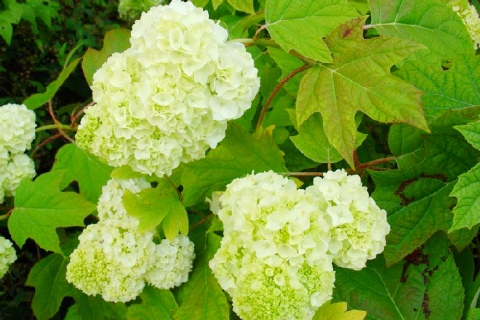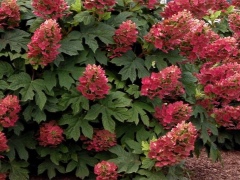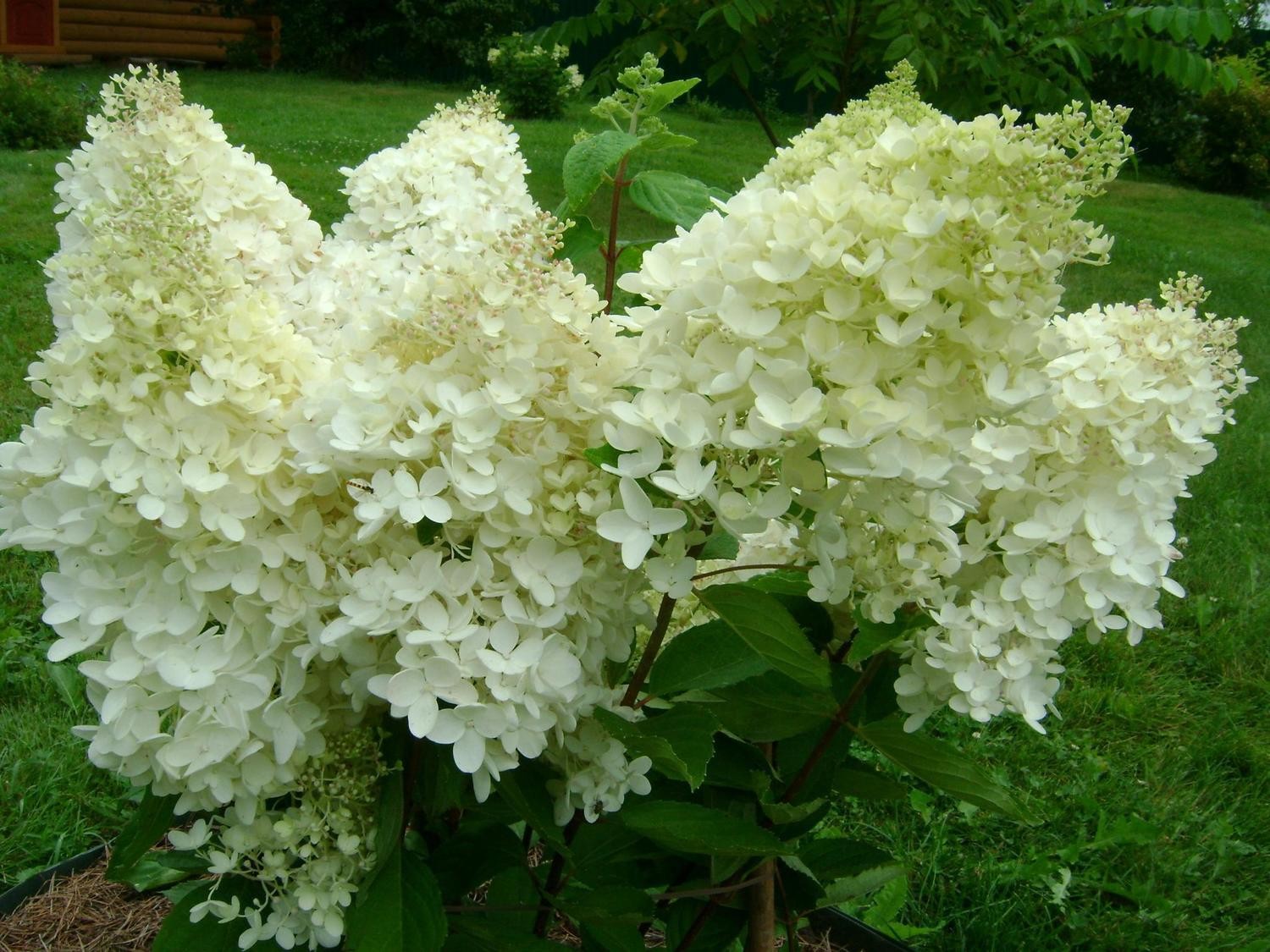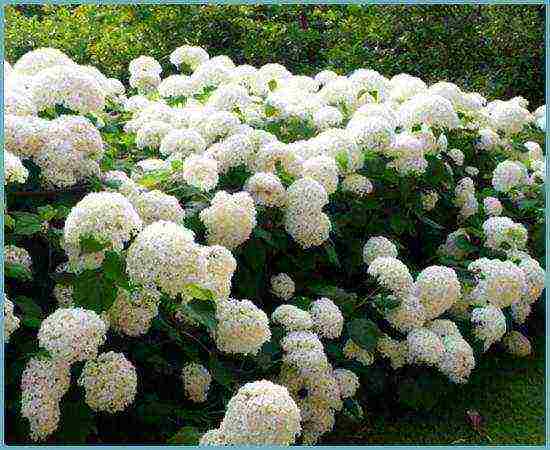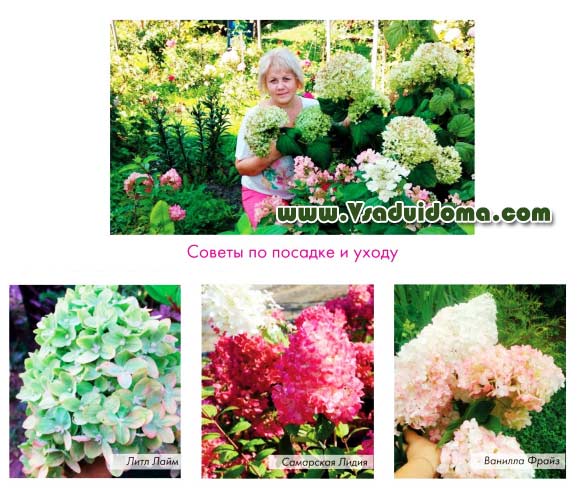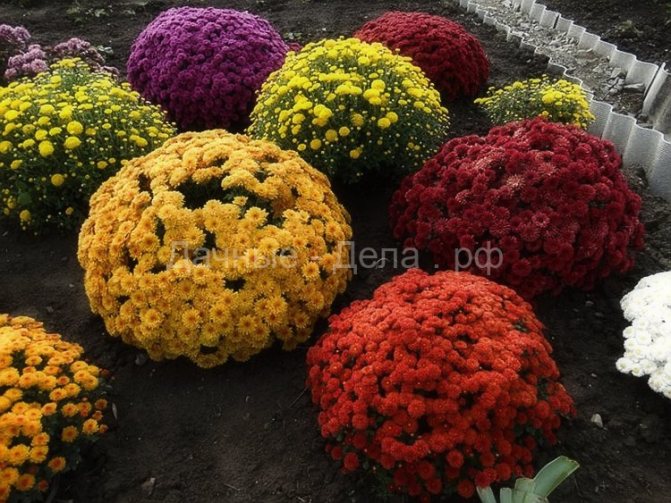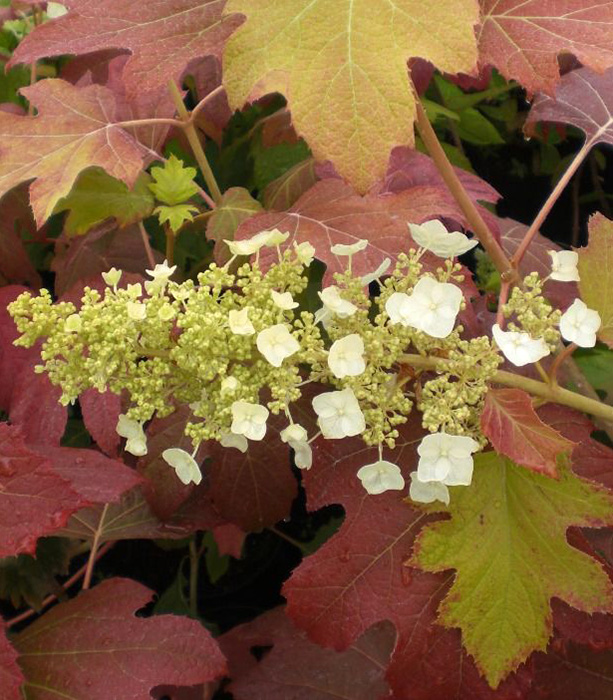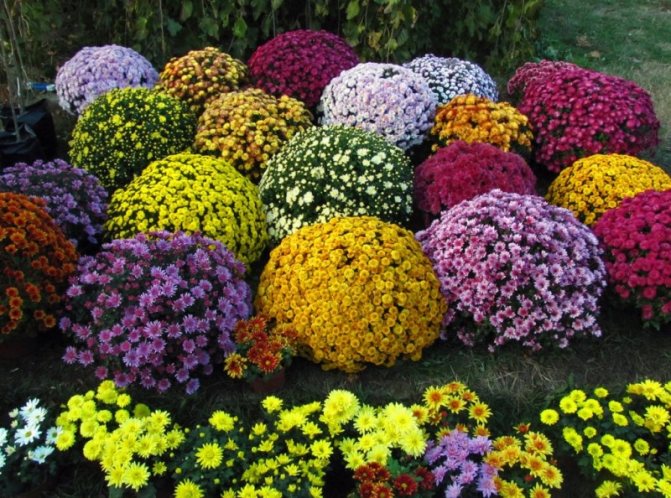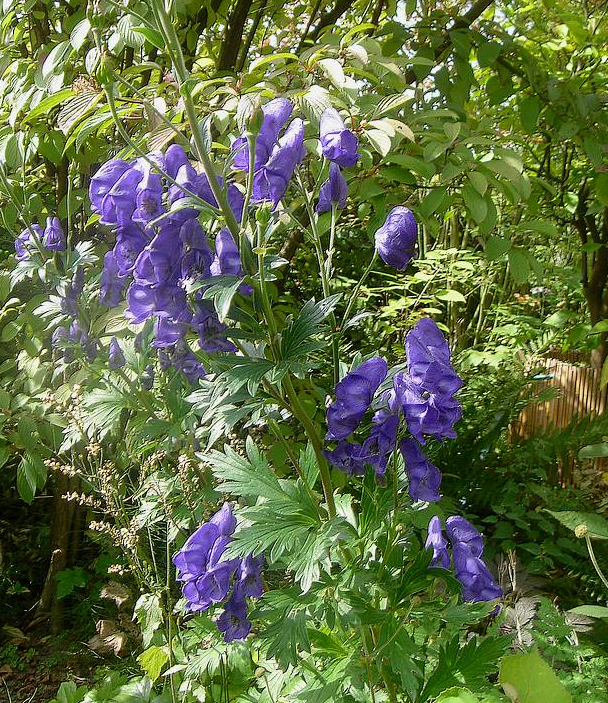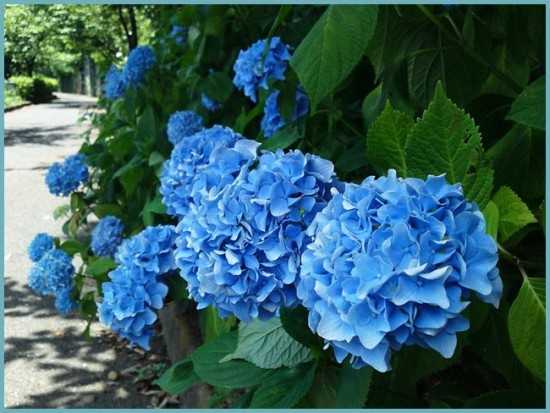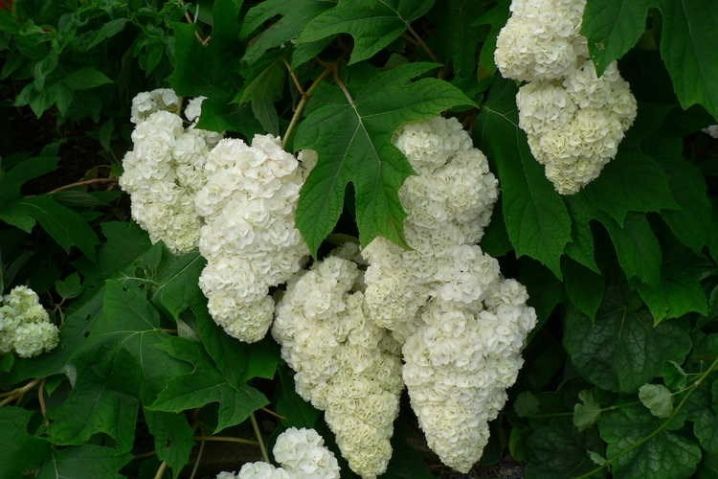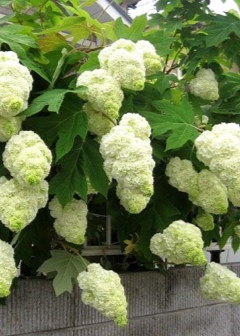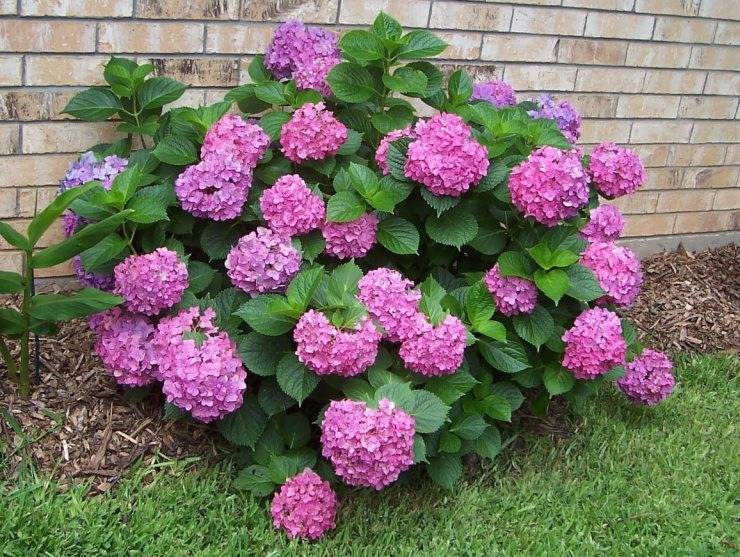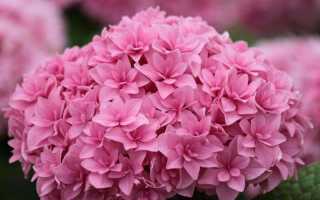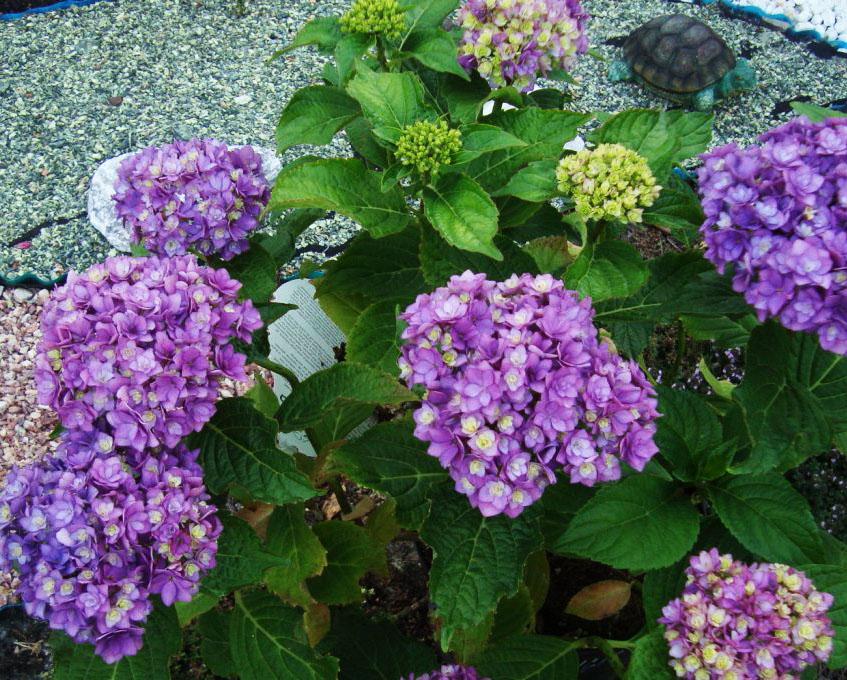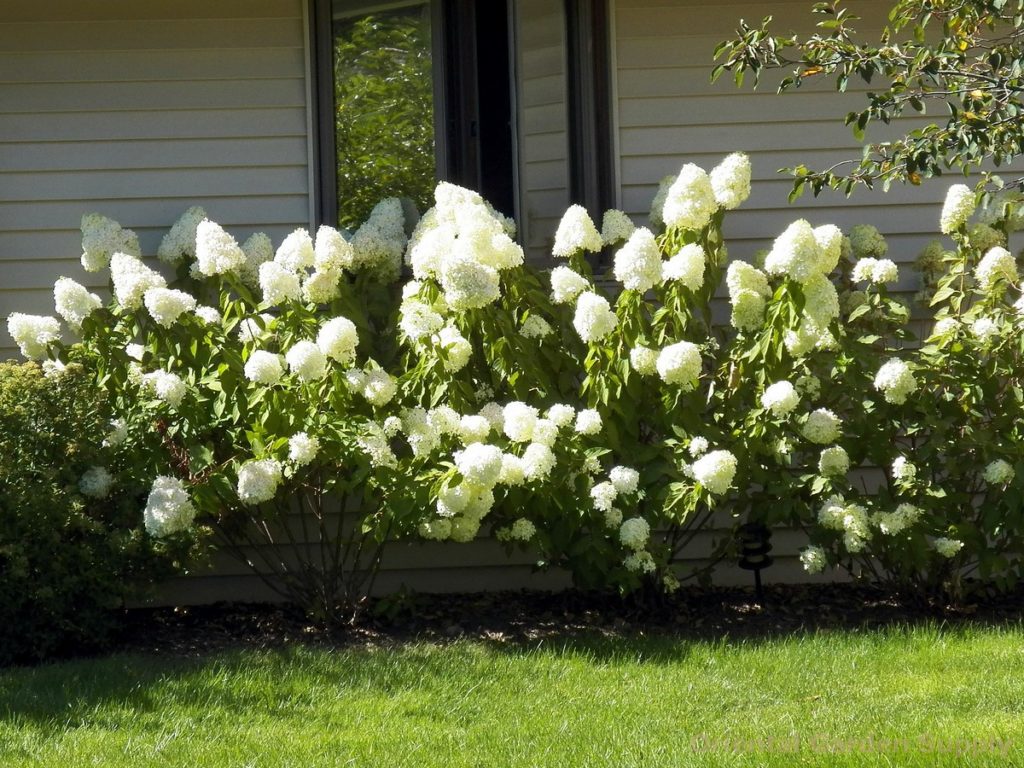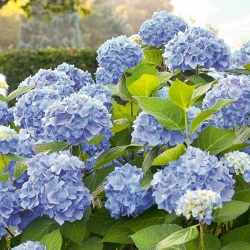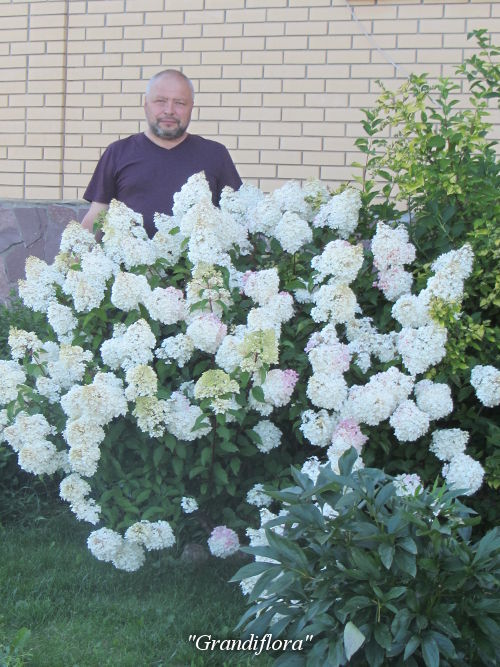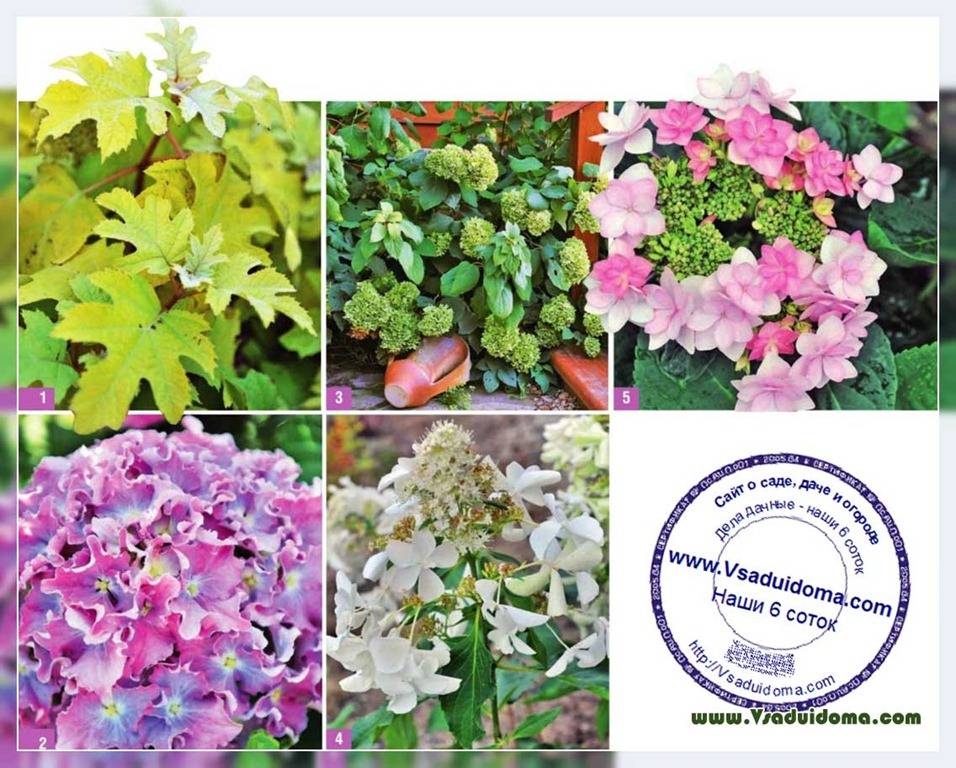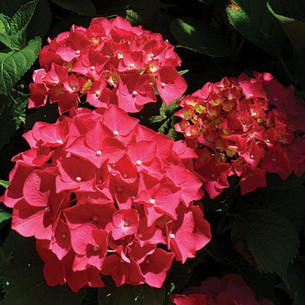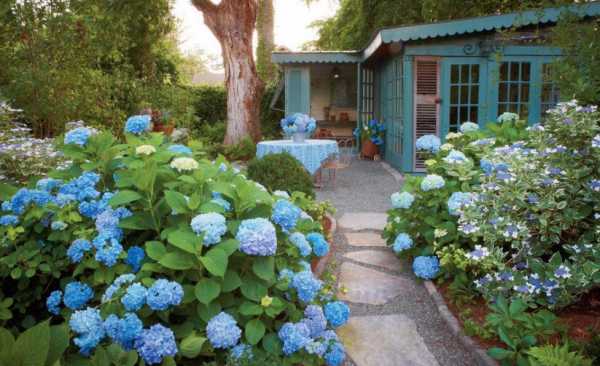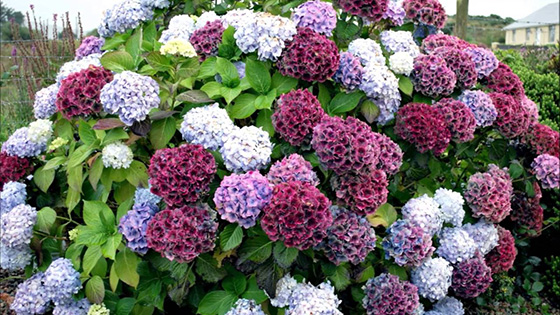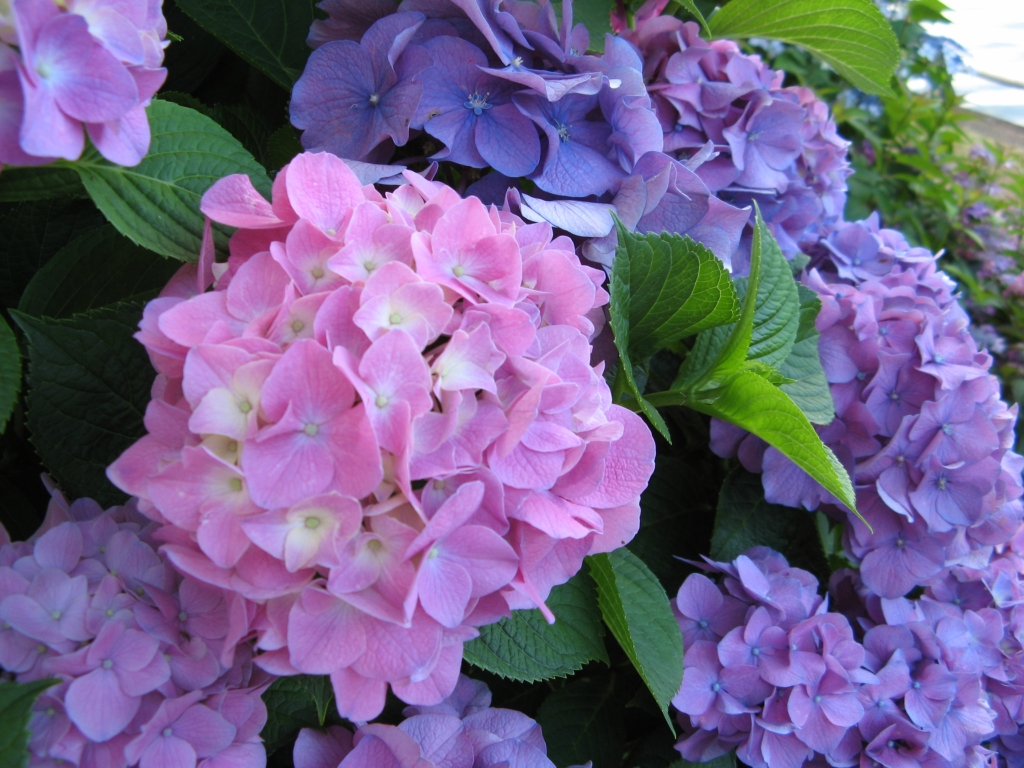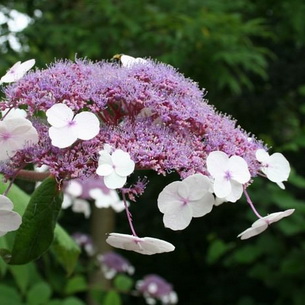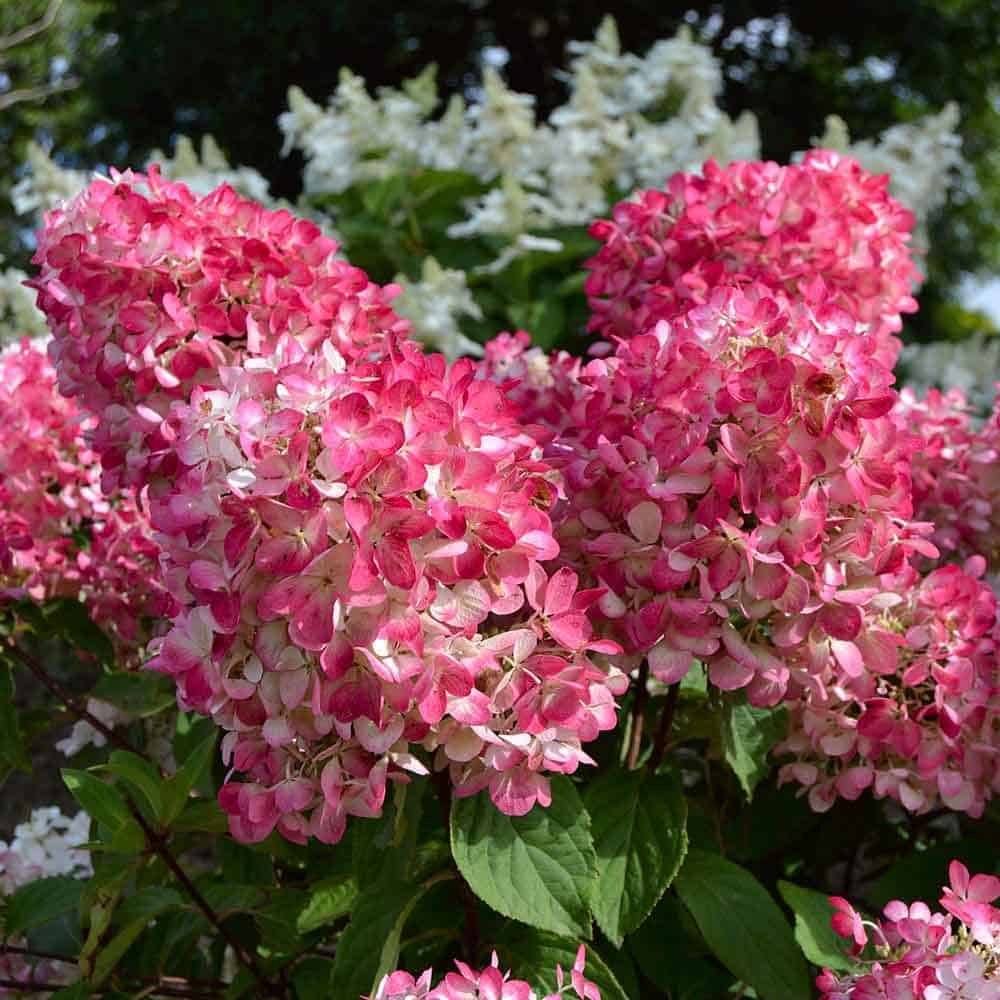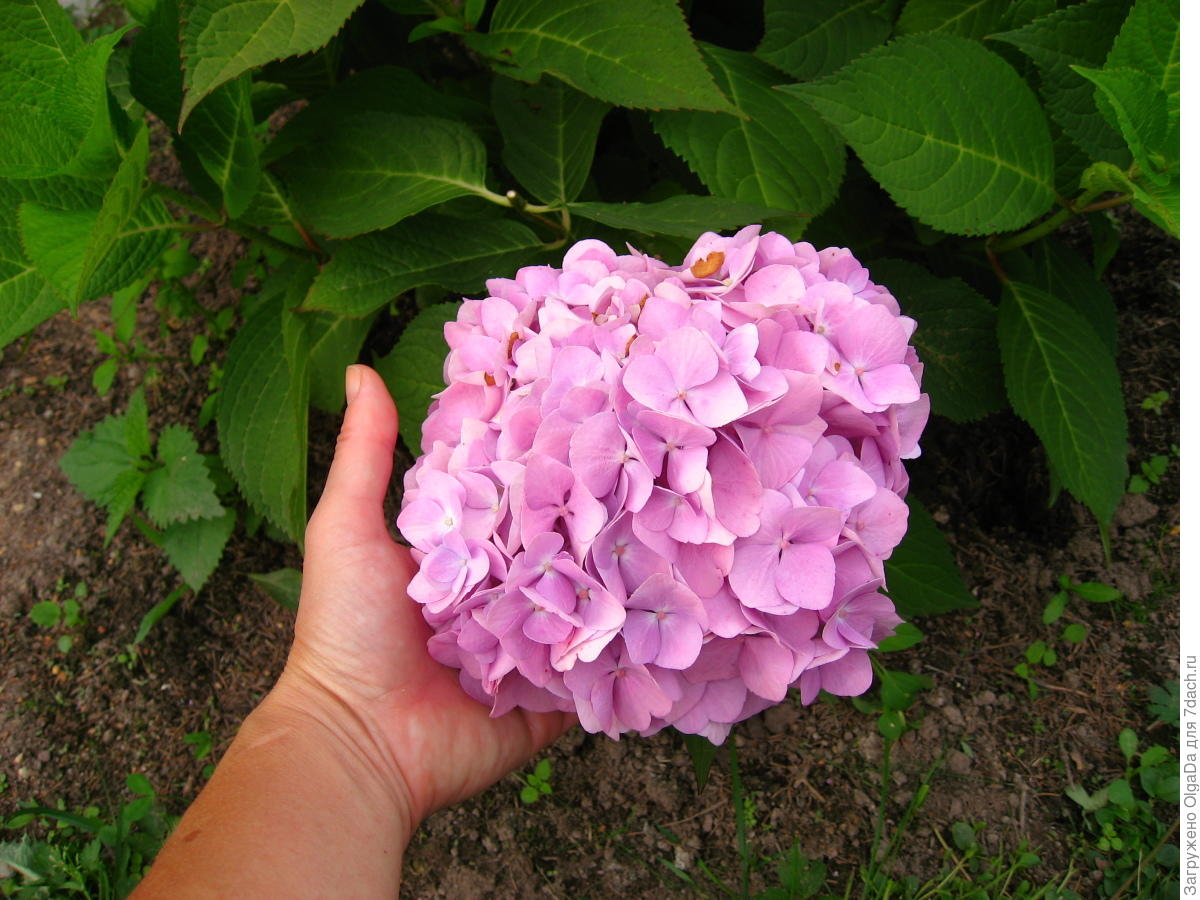Varieties and varieties of hydrangea
Hydrangea is an undoubted favorite among flowers in summer cottages
A long flowering period, a variety of shapes and tones attract special attention to it from gardeners and designers; more and more often, various varieties of this perennial are used in landscape design
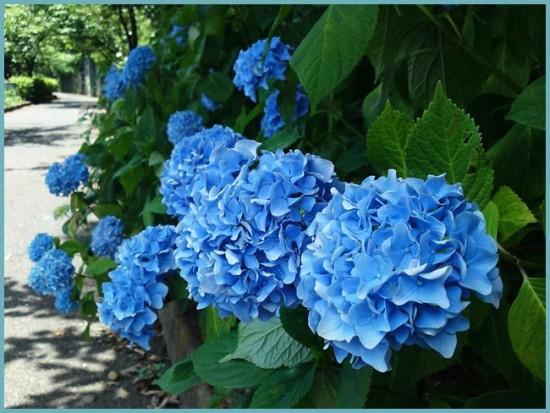 Blue hydrangea
Blue hydrangea
Hydrangeas can be spherical, racemose, and white, lilac, red, two-colored in color. The most common in our latitudes is the tree hydrangea. Unpretentious, fairly easy to care for and grow, the plant is recommended for novice gardeners. Several varieties of shrubs have been bred by breeders:
"Bella Anna" - a new variety of tree hydrangea, has rather large spherical inflorescences, the crown grows up to three meters in diameter, the color of the petals is from pale pink to purple-pink, blooms throughout the summer season and September;
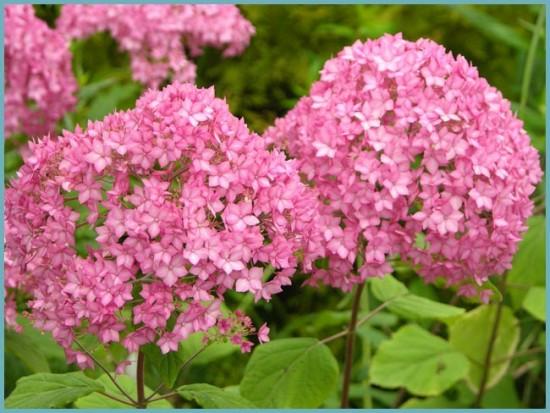 Bella Anna variety
Bella Anna variety
"Anabel" is a wildly flowering, spreading shrub about 1.5 m high, inflorescences in the form of a ball of snow-white color, blooms in early July and retains its color throughout the summer season until September. After the end of flowering, the leaves of the plant remain bright green throughout the fall. Variety "Anabel" is adapted for wintering, does not require special shelter for the winter, frost-resistant;
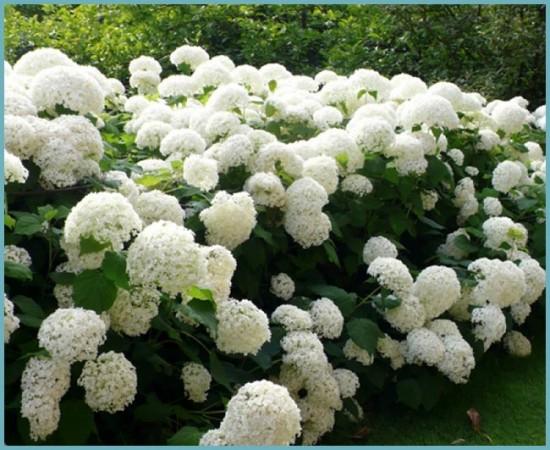 "Anabel"
"Anabel"
"Grandiflora" - differs in large crystal-white inflorescences, blooms for 4 months;
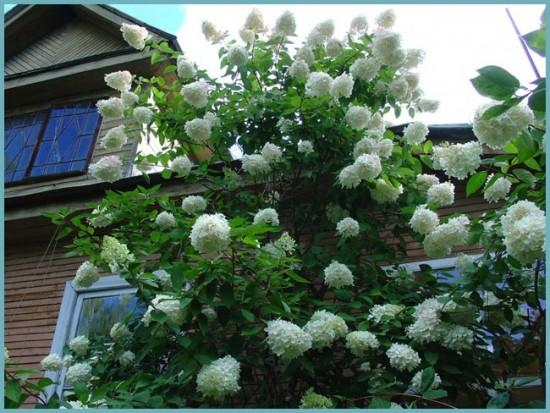 "Grandiflora"
"Grandiflora"
Invincibel Spirit is a new variety of hydrangea with pink petals;
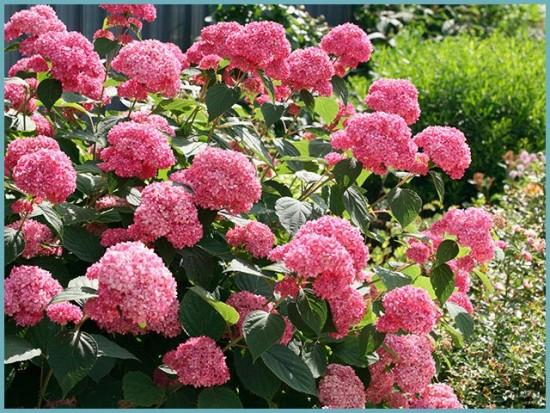 "Invisibel Spirit"
"Invisibel Spirit"
"Sterilis" is a variety with hemispherical, dense, heavy inflorescences; during the flowering period - from July to October - the petals radically change color: from pale green to crystal white.
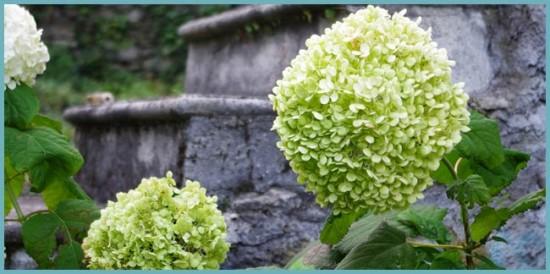 "Sterilis"
"Sterilis"
Also, a fairly common perennial variety - Panicle hydrangea, planting and caring for which is quite simple. This flower is attractive with inflorescences of an unusual - paniculate - shape, frost-resistant, characterized by rapid recovery even in unfavorable climatic conditions. An interesting feature of this hydrangea variety is the particularly long flowering period, during which the inflorescence changes its color. Does not need mulching for the winter. The most common varieties of panicle hydrangea are:
"Vanilla Freise" - a variety with pale white-pink petals;
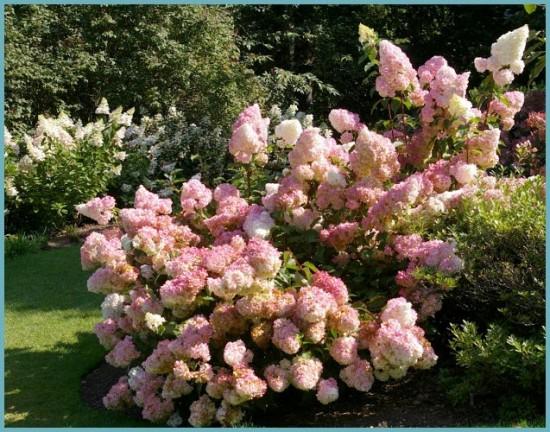 Vanilla Fries
Vanilla Fries
"Limelight" - the plant blooms in autumn, differs in large inflorescences of a pale lemon shade;
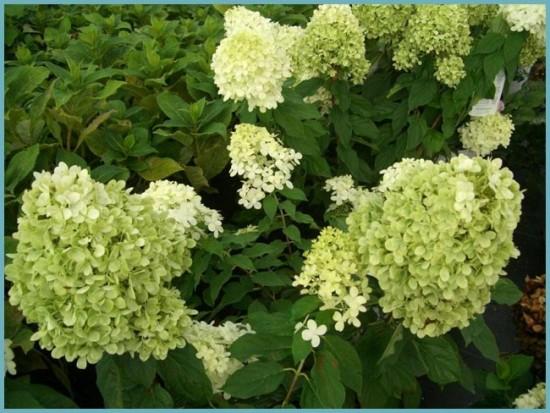 "Limelight"
"Limelight"
"Pinky Winky" is a hydrangea with delicate red petals.
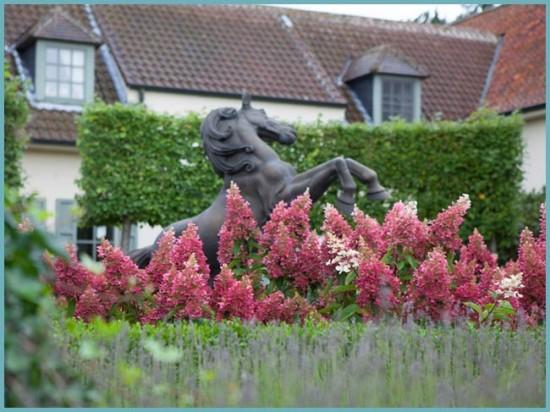 "Pinky Winky"
"Pinky Winky"
Description
This plant is a large deciduous shrub that can reach a height of 2 m. Its "highlight" is pleasant to the touch textured, large 7-lobed leaves, the shape of which is close to the shape of oak leaves. Such leaves are the main difference between oakleaf hydrangea and other varieties of this shrub. The edges of each hydrangea leaf are sharp, serrated. Leaf size - up to 25 cm Fresh shoots and young leaves are covered with a light white fluff, which eventually disappears, remaining only on the seamy side of the leaf. , which makes it beautiful even during the wilting period.
Not only the leaves attract the attention of gardeners to the hydrangea - it blooms very beautifully. Its flowers are large panicle inflorescences of small white flowers up to 3 cm in size, collected in a cone (we talked about interesting facts and the best varieties of panicle hydrangea here)
The shrub blooms for a long time: from June until autumn.
The trunk of the hydrangea is straight, lignified at the base, well branched.The shrub grows very quickly - in just three years a gorgeous lush plant can be grown from a seedling, since the shoots have time to stretch up to 50 cm in one year.
The root system is branched, shallow.
Climate
In general, hydrangea is oak-leaved - a frost-resistant plant, but in central Russia it can freeze slightly without proper care. Winter hardiness zone - up to -29C. This plant thrives best in the southern regions of the country. There are cases when the kursarnik winter well in the Moscow region.
ATTENTION: Young plants should be covered for the winter or transplanted into a pot and kept indoors as a house flower during this period of the year. With age, the shrub tolerates cold much better.
Varieties
There are several varieties of shrub, the two most common are Garmony and Applause.
Hydrangea oak-leaved Harmony has spherical or flat large inflorescences with a diameter of up to 20 cm. The petals of flowers are white or cream in color.
Oak-leaved hydrangea Applause reaches a height of 2 m and has large inflorescences of snow-white color. Sterile flowers are larger than fruiting ones.
Color variations
Hydrangea red (red) or crimson, for example, Prima varieties will be a bright decoration for any garden area. Variety "Goliath" is distinguished by rich pink inflorescences with a diameter of about 25 cm.
White flowers are the most popular, hybrid varieties are distinguished by unpretentious care, immunity to diseases and frost resistance.
The Ramars variety is an ornamental purple hydrangea. Alba is a beauty with delicate pink petals.
Green hydrangea does not differ in particular decorativeness, however, due to the unusual color of the petals, it looks very elegant.
Yellow hydrangea can be grown in flower beds, used as a component of landscape compositions, this plant also looks beautiful in a single planting thanks to elegant lush inflorescences, reminiscent of the sun descending from heaven to earth.
Burgundy hydrangea is a real aristocrat of the flower world. The easiest way to propagate this noble flower is by cuttings. Can be used in cut flowers for making bouquets.

Amazing hydrangea flowers are good for making original bouquets
Growing
Growing oak-leaved hydrangea is not difficult, but planting this plant requires adherence to several strictest rules. If you don't follow them, you won't be able to grow a healthy hydrangea.
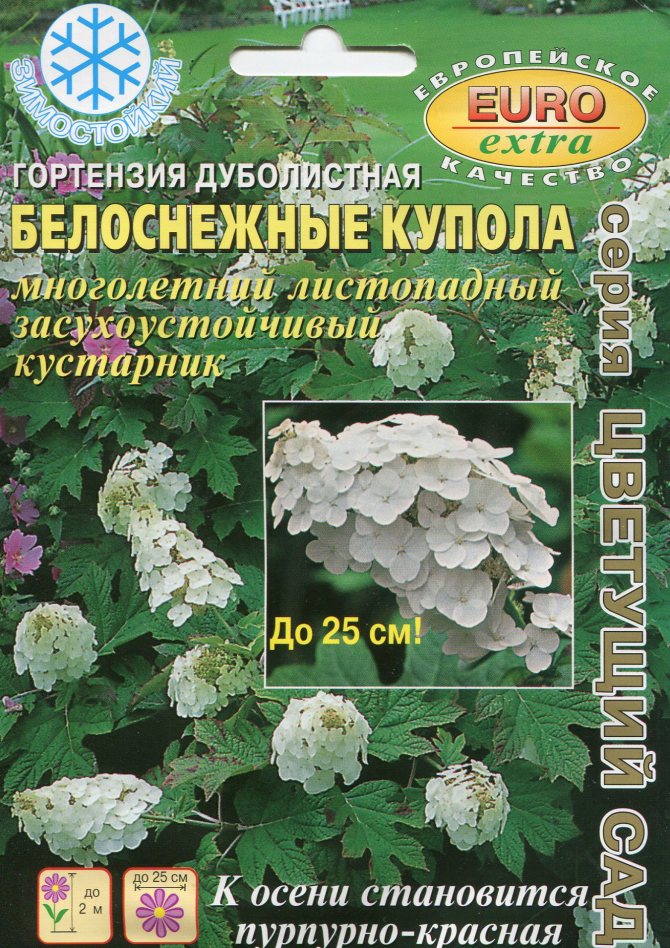
Before planting, you need to soak the seeds for 10-12 hours
Choosing a breeding method
Hydrangea rough macrophylla - description, planting and care
Practicing 3 ways:
- Seeds. Experienced gardeners and breeders choose this option, it is the most difficult. Plus - a completely healthy, robust plant that is more resistant to weather conditions. Beginners should not choose it.
- By dividing the bush. The method is not laborious, fast. Difficulty can arise only in the process of shortening the sheet.
- Cuttings. The result is a hybrid parent instance. The method is quick, most often it is used by beginners.
Important! Before planting, you need to soak the seeds for 10-12 hours to increase their similarity.
Landing conditions
Oak-leaved hydrangea is very picky about the soil. An area with loose, fertile soil is ideal. During planting, it is recommended to fill the soil with a mixture of sand and humus.
It is necessary to place the plant in a bright place or in partial shade. It is better to choose a not quite open area if there is a risk of strong winds.
Care and fertilization
In addition to landing, grooming is important. Observing the recommendations of experts, it is not difficult to grow a healthy plant:
- In the first year of life, watering should be done up to 2 times a week during the summer period.
- Dry, damaged, old and diseased parts of the hydrangea should be trimmed regularly. After the end, remove all wilted inflorescences.
- Young annual seedlings are usually not pruned.An adult plant is cut off radically in the fall (up to 40-50 cm). After 1-2 years, it recovers completely.
- During the entire growing season, it is necessary to loosen, weed the ground, removing weeds.
- For the prevention of diseases and protection from pests during the growing season, it should be treated with a solution of copper sulfate. Add 15 grams to 10 liters of water. dry matter, mix thoroughly. In the spring, it is enough to treat once with Bordeaux liquid.
- In the first year of life of an oak-leaved hydrangea, it is not necessary to feed it. In the second year, they begin to carry out complex feeding (2 times a year: during planting and during the growing season).
Important! Hydrangea oakleaf does not tolerate any types of nitrogen fertilizers. If you add them to the soil, the plant will soon die.
Oak-leaved hydrangea wintering
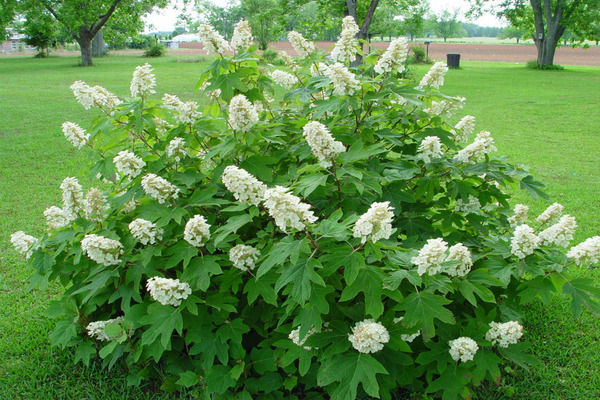
For this plant, competent wintering is simply necessary, this is especially important for a young hydrangea. A young seedling is transplanted into a pot container and kept in a heated room.
Mid-December is the time when the hydrangea, having lost its foliage, falls asleep. That is why it should be placed in a dark place and watering should be reduced.
By the time the plant wakes up (April), bud swelling can be observed. Right now, the plant needs to be put to the window, into the light. Irrigation with fertilizers is gradually introduced. And closer to May, the hydrangea is planted in open soil in the garden.
In the south and west of Russia, oak-leaved hydrangea can easily survive the winter, it does not have to be transplanted into a pot and cleaned indoors. But, a winter shelter is necessary for her. The plant is covered in autumn (October-November). To do this, bending the branches to the soil, cover the hydrangea with a covering material.
In the spring, the plant is gradually freed from the shelter. Pay close attention to the weather forecast so as not to miss sharp frosts. Having passed all the dangers, you can fully open the plant.


